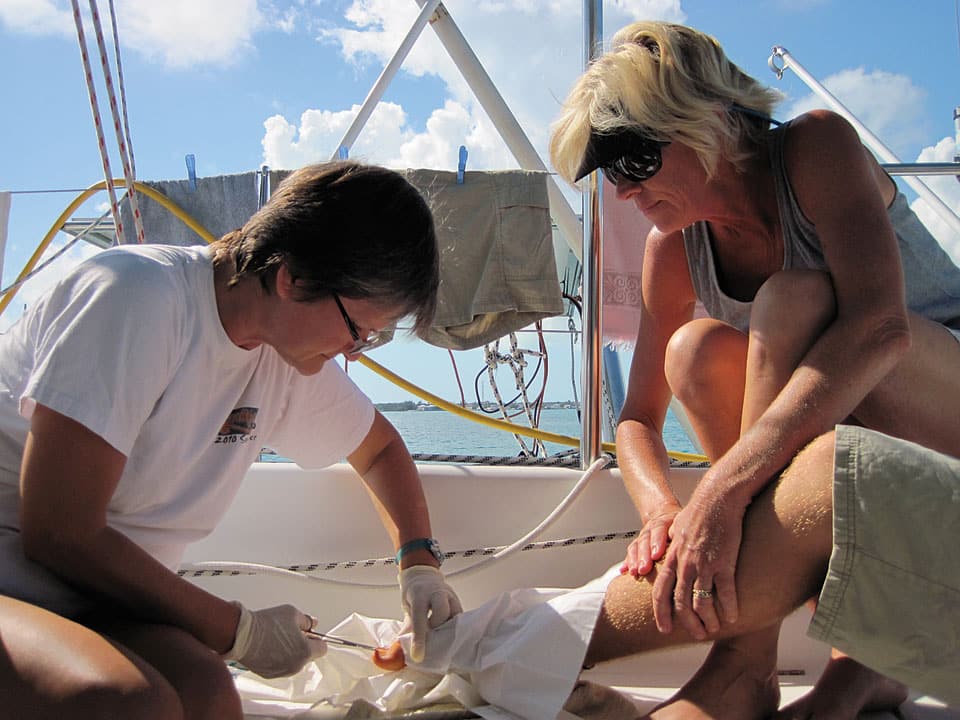
Osprey’s Medical Kit
As with every other aspect of living and sailing fulltime on Osprey, we want to be as self-sufficient as possible when it comes to illness and injury. But my husband, Johnny, and I aren’t doctors. So before we left, we bought a Marine 2000 Medical Kit from Adventure Medical Kits ($600, www.adventuremedicalkits.com). With adequate intestinal fortitude, we could handle everything from a broken bone to pulling a tooth using the kit’s tools and instructions. Thankfully, we’ve had little reason to open it. We also asked our general practitioner to go through the kit and add anything that she felt was missing. Among other things, she added a range of antibiotics, eye- and ear-infection meds, epinephrine autoinjectors for allergic reactions, and morphine and Vicodin (which contains acetaminophen and hydrocodone) for serious injuries or pain. The toe injury that our son, Kaeo, suffered brought to our attention one thing we don’t have, and that’s injectable—or at least topical—lidocaine or some other numbing agent. For illness like the flu or colds, we stock up on all the usual medications, and we always carry plenty of Advil and Tylenol (or generics) for fever or minor aches and pains. Along with advice and extra meds, our G.P. gave us her email address. Whenever something comes up that we feel we can’t handle, we send her an email for advice, and she responds within hours. It’s a comfort to have this kind of backup, even if we’re often on our own in terms of the immediate problem.








